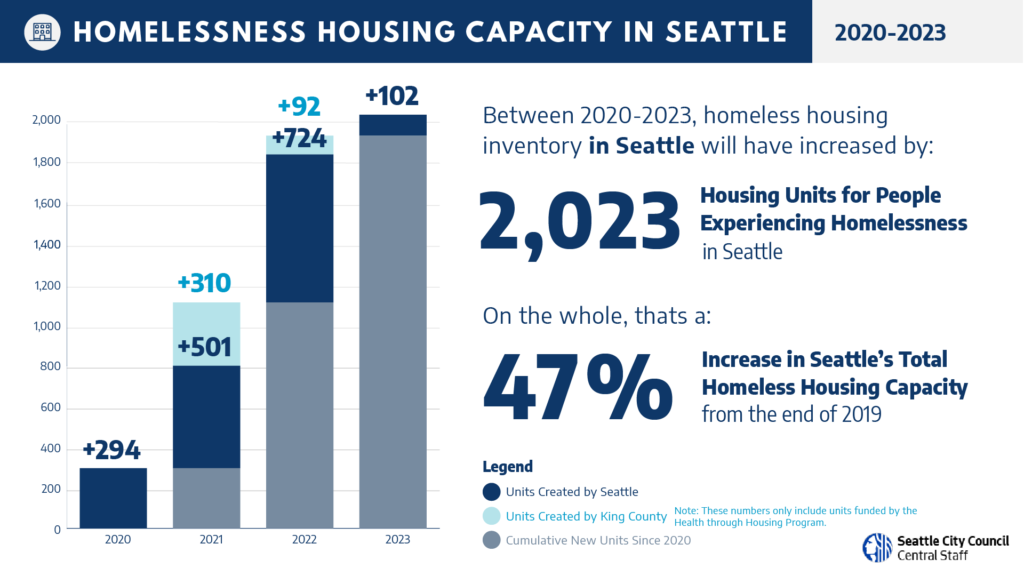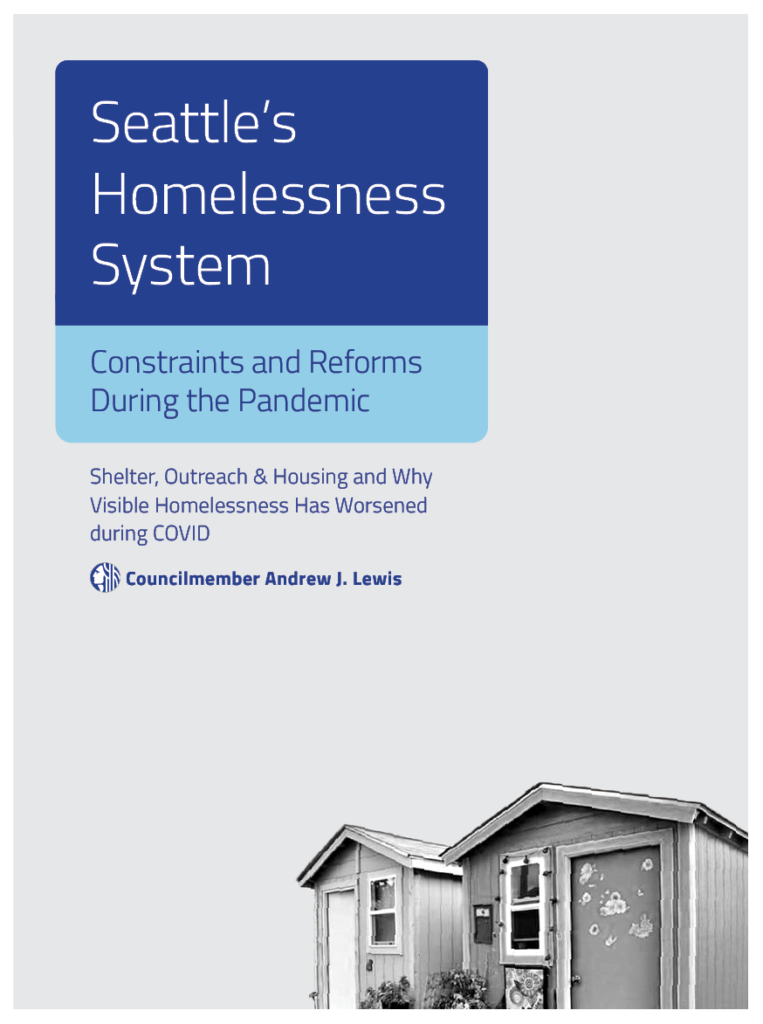New Report Celebrates 2,000+ New Units of Housing for Homeless, Makes Recommendations to Guide Future Investments
Seattle, WA – Councilmember Andrew J. Lewis (District 7 – Pioneer Square to Magnolia) released a report today compiled by Council Central Staff which analyzes Seattle’s homelessness system, and summarizes current demands for shelter, outreach and housing. The report, which Lewis requested in September 2021, also assesses the impact of COVID-era constraints and reforms on our homelessness housing continuum system, pointing to a growing need for further investments.
“One thing is clear: there is a clear connection between COVID’s impact on Seattle’s shelter system and the stark increase in visible homelessness,” said Lewis. “The staff analysts have pointed to what we know instinctively: future investments in shelter, outreach and homelessness housing in the next budget – which the Council is currently crafting – are the only practical way to scale emergency shelter in a way that doesn’t further exacerbate the scarcity of shelter spaces and marked uptick in visible homelessness.”
The report indicates that there are more than 2.5 times as many requests for access to shelter than can be accommodated. “Threatening to remove an encampment doesn’t solve the underlying problem of unsheltered homelessness. Quite the contrary: removing encampments without providing shelter and services just moves people around in a cruel, wasteful game of whack-a-mole,” said Lewis. “The data suggests that when more suitable shelter spaces become available, more people move indoors.”

The City of Seattle is in the midst of an unprecedented expansion of housing to address homelessness. Between 2020 and 2023, there will be approximately 2,023 new housing units in Seattle for people experiencing homelessness. On the whole, that’s a 47% increase in the City’s total homelessness housing capacity.
The City funded 1,621 of these units via Housing Levy dollars, the 2021 Adopted City Budget as well as $28.5 from the federal American Rescue Plan. Additionally, 868 housing units will be coming online as the result of notice of funding availability (NOFA) awards for Office Housing dollars from previous years. A new King County program called Health Through Housing aims to acquire up to 1,155 new units countywide. To date, 402 units have been acquired in Seattle and are slated to open in 2021 and 2022.
Other aspects of the report include the need by Council to emphasize a person-centered outreach strategy to build trust and rapport with people experiencing homelessness. Enforcement strategies should be developed separately, not co-mingled with outreach. “We’re in a unique moment, thanks to the support from our state and federal partners, to meaningfully acquire supportive housing,” said Lewis. “The resources coming online in fall of 2021 and winter of 2022 will make a big, visible difference in addressing the homelessness crisis. In the meantime, the Council should also consider appropriating resources for mitigation strategies.”
While the homelessness crisis increased significantly during the COVID-era, and continues to be the biggest omnipresent challenge the city faces, there is cause for optimism that long delayed housing and shelter assets will finally open over the next few months.
In June 2021, the Council authorized an additional $8.4 million for emergency shelter and outreach, specifically for people living outside as well as individuals residing in recreational vehicles. To date, none of these investments are operational; and, in March 2021, the Council appropriated $9 million for non-congregate shelter. $5.5 million was used to expand hotel sheltering as part of the JustCARE program, but those beds were not operational until the second half of 2021.
Short-term mitigation strategies should be considered in the event that anticipated asset openings are delayed. “While we should hope for the best, the Council must also craft a homelessness budget that plans for the worst,” said Lewis. While timelines for housing and shelter currently promise significant new operational housing and shelter over the next 6 months, significant issues regarding provider capacity, siting, and development hurdles threaten potential delay.
The Council is in the midst of crafting the 2022 City budget, and Councilmembers will begin identifying issues they want to address in the Mayor’s proposed budget later this week.
###


